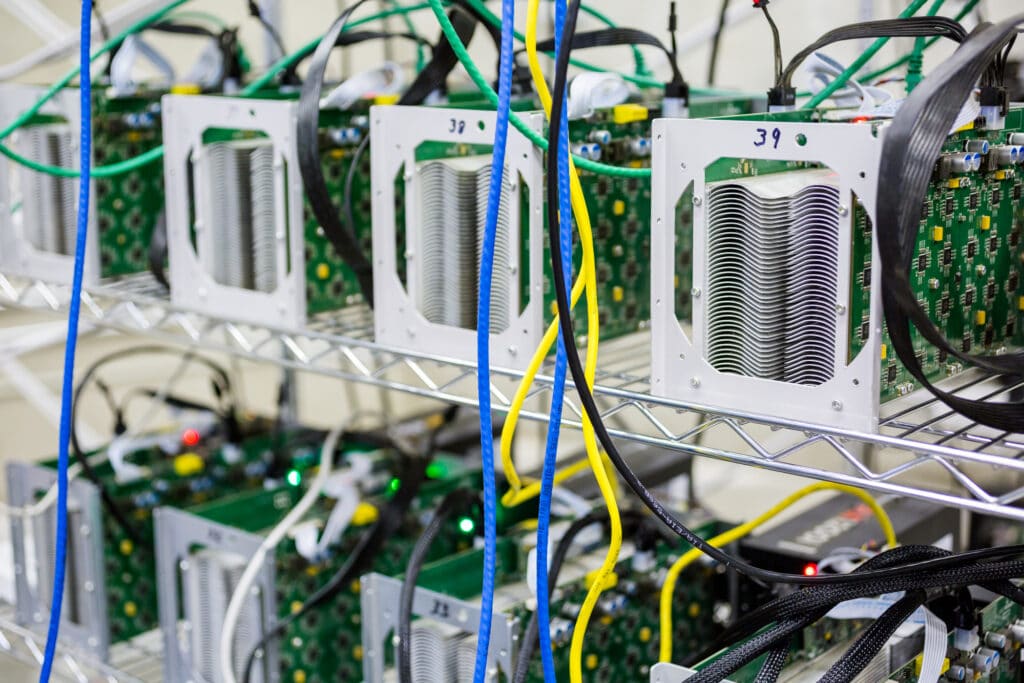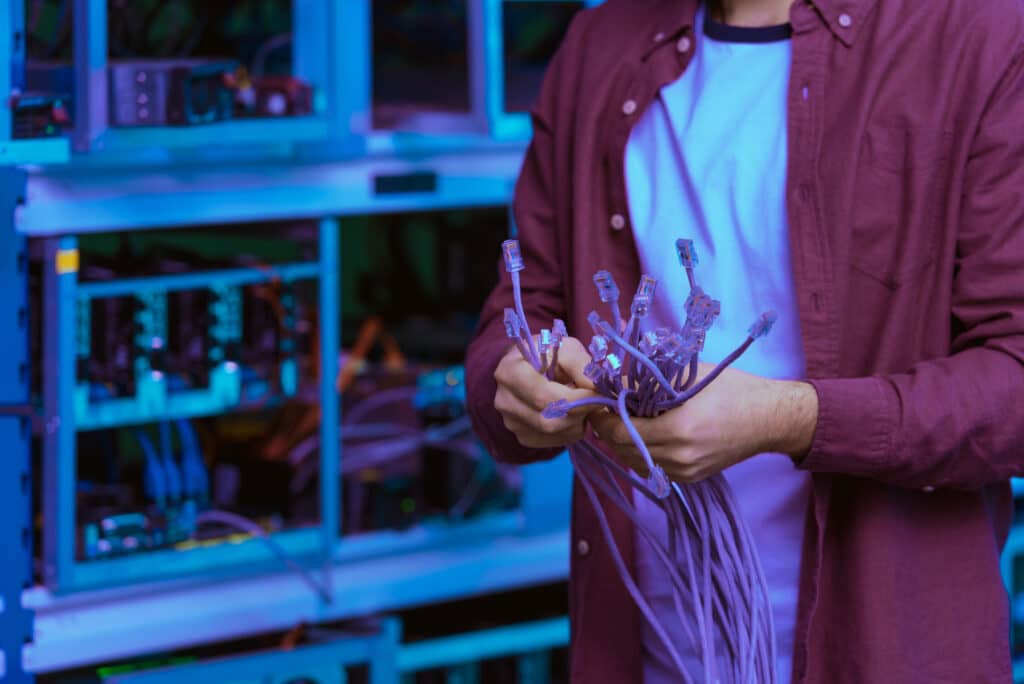Bitcoin mining is a complex process that involves solving complicated math problems using high-performance mining hardware that consumes an enormous amount of electricity. Generally, bitcoin mining is a task that large companies perform; however, individuals can set up a bitcoin miner via pooling.
If you understand the theory behind bitcoin mining, it is now time for you to understand its practicality. As we all know, doing things practically is always different from how we read them in theory. The same goes for bitcoin mining and crypto trading in general.

Factors to Consider When Choosing Hardware to Set Up a Bitcoin Miner
To generate the digital cash in question, you first need to pick your hardware. Following are the two main factors to consider when choosing hardware to set up a bitcoin miner:
1. Hashrate
The network’s ability to verify and store transactions is called hashrate. It is an essential system of measurement that directly indicates the performance and security of your network. Simply put, it is the computational power of your hardware to effectively mine and process transactions. This metric is used on proof of work (PoW) cryptocurrency networks, which of course, includes bitcoin.
A basic definition of hashrate would be the total number of calculations your mining hardware can perform in a second. Higher hashrates are better because the more calculations your hardware can solve, the better your chances of successfully solving a transaction block. Hashrates are measured in the following units:
- Megahashes per second (MH/sec)
- Gigahashes per second (GH/sec)
- Terahashes per second (TH/sec)
- Exahashes per second (EH/sec)
2. Electricity Usage
Electricity is a significant issue with bitcoin mining as the mining hardware uses up enormous amounts of electricity when creating digital cash. Different hardware has a differing appetite for electricity. It is best to choose hardware that uses comparatively less electricity. Higher electricity consumption means higher costs which might not make for a good bargain in the long haul. If you spend all your money to mine bitcoins, the coins you generate won’t be worth the price you paid. Besides the monetary concern, there is a massive risk to the environment.
Cost Calculation
Now that you know the two most important things when choosing hardware to set up a bitcoin miner, it is now time to look at how you can calculate the total cost of the mining process.
Before calculating the cost, you first need to find how many hashes your hardware produces for every watt it uses. To find the rate of hashes per watt, all you need to do is divide the hash count by the total number of watts of your hardware. You can find this information in the specification sheet that comes with your hardware.
To make it easier for you to understand, let’s look at an example. Suppose your device is generating 500 Gigahashes per second and has 400 watts. By dividing 500 with 400, you will get a figure of 1.25. This implies that your hardware will produce 1.25 Gigahashes per second per watt.
To calculate the cost of electricity, you can use any online electricity calculator or simply check your power bill, and you’ll know the total cost of the mining process. Of course, this is only the cost of electricity; the cost of hardware would have to be added on separately. Generally, the hardware costs around $10,000.

Hardware Categories for Bitcoin Mining
There are mainly three hardware categories for bitcoin mining. Let’s dive into the details of all three:
1. ASIC Chips
ASIC or Application Specific Integrated Circuit chips are the best options you have for bitcoin mining. They offer unmatched speeds of 7 to 14 Terahashes per second. But because of their exceptional performance, they are pretty expensive.
If you’re concerned you may not recover the cost invested in the mining process; you can use online profitability calculators. You can compute an ROI index by inputting hardware cost, electricity cost, and hashrate by comparing the factors mentioned earlier with the bitcoin price.
2. CPU/GPU
You can use your desktop computers to mine bitcoins, but it is not something experts would recommend. A regular CPU can solve complex math problems, but the process is slow and tedious by today's standards, making it completely pointless.
To enhance the performance of CPUs, Graphical Processing Units (GPUs) were introduced. They are a form of graphics hardware that enhances the performance of your computer. You can use GPU to mine other cryptocurrencies besides bitcoin. But the performance of GPU doesn’t even come close to that of ASIC chips.
3. FPGA
Field Programmable Gate Array or FPGA is an integrated circuit that has been designed especially for bitcoin mining. The single-chip FPGA offers a high speed of 750 Megahashes per second. While that is undoubtedly high, it’s still not as fast as ASIC chips. Even though FPGA chips are better performing than CPU or GPU, they are no longer considered feasible to set up a bitcoin miner.
Conclusion
Mining hardware is the most crucial element for setting up a bitcoin miner. But individual mining does not yield results in today’s crypto trading. It is best to join a mining pool to create a block to ensure your success.
You will need to invest in high-end hardware and consider its energy consumption. Both electricity and hardware are essential factors that ultimately determine the total cost of the mining process. You can only compute your return on investment by considering the wattage and hashrate along with the cost of electricity and hardware.
The price of bitcoin luckily rises more than it drops, so even if you invest a high amount, the cost can be justified; however, the same cannot be said about other cryptocurrencies. But at the end of the day, it is all a big gamble because you never know when the bitcoin price will soar or crash down. However, it is essential to remember here that the price doesn’t remain the same at all times. It will change eventually with the changing market trends.
The post How to Set Up a Bitcoin Miner? appeared first on Fat Pig Signals.
https://ift.tt/FeuR7yv

Nenhum comentário:
Postar um comentário